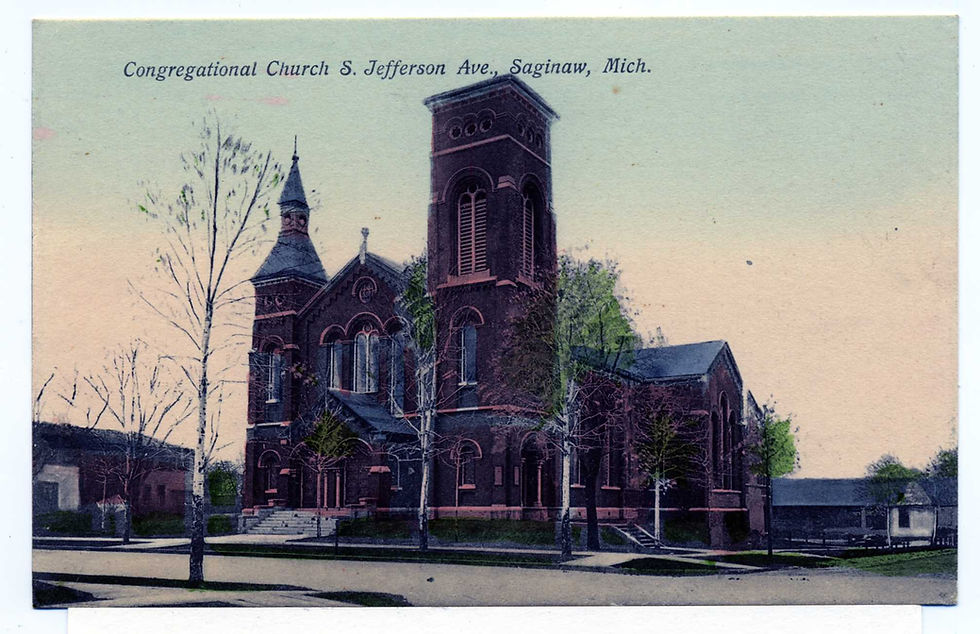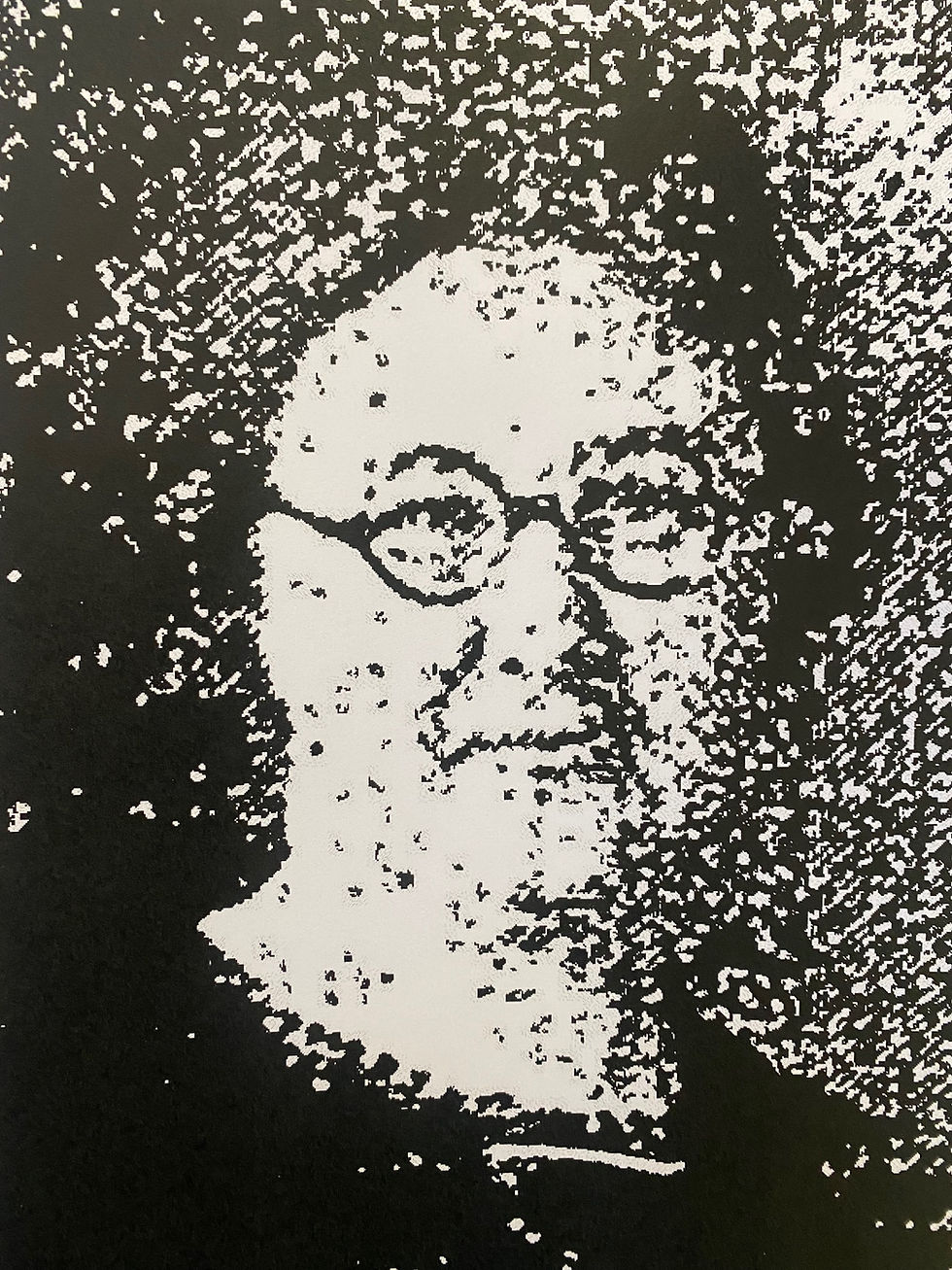A CTK Secret: The Saginaw Cookbook
- kellison71
- Jun 1
- 4 min read
Frequently, we are asked where and how we locate the recipes for the Castle Test Kitchen. Like all generous cooks, we are more than willing to share our secrets.
The foundation and inspiration for this series of posts is Savoring Saginaw, a cookbook researched and written by Jean R. Beach and Patricia Shek.* This treasure trove of Saginaw recipes was published by the Castle Museum of Saginaw County History in 2007. Although Jean and Pat used a wide variety of sources – Jean’s collection of Saginaw cookbooks is in the Castle Museum’s collection, one of their favorite books was The Saginaw Cookbook and it has become one of our favorite sources.

“The Saginaw Cook Book, A Project of the Ladies of the First Congregational Church, The ladies of the first Congregational church have projected an enterprise for raising funds for the society, which is not only novel and promises to arouse considerable interest but which should prove profitable to both themselves and those who lend them support. The project is the publication of a book useful to every housekeeper and family to be known as ‘The Saginaw Cook Book.’ It will contain receipts of value to every branch of the culinary art, and furnished by Saginaw ladies themselves, whose names will appear along with recipes they contribute. The book will also carry some advertising to help defray the cost and it will be sold at really a nominal sum. There is nothing more interesting to the good housekeeper than a handy cook book and additional value will be attached to this from the knowledge of the ladies who vouch for the recipes. Mrs. Smith is always pleased to know that Mrs. Brown can make a success of Mrs. Jones’s recipe, for then she can do the same. The book will be published as soon as possible.” The Saginaw Evening News, October 23, 1893.

Published by the members of the First Congregational Church’s Women’s Fellowship, the first edition of the Saginaw Cook Book – there would be four - went on sale the first week of 1894 and was promoted with snappy advertising:
“Don’t Elevate Your Nose because your meals don’t happen to please you. Present the cook a copy of the ‘Saginaw Cook Book.’ It’s brim full of new ideas and the dainty dishes therein described rouse your appetite. 25 cents. On sale at Hayden’s Grocery, Prall & Co.’s, W. F. Twelvetrees’, Saginaw Dry Goods Co’s, J. W. Ippel’s, Don G. Doore’s. The Saginaw Evening News, January 5, 1894.
Although the majority of the recipes were provided by members of the congregation, the committee obtained recipes from a wide cross-section of the Saginaw community. Certainly, this was part of the appeal and success of the book – by soliciting contributions from outside First Congregational Church, they created a larger market. Who can resist purchasing a cookbook that contains a recipe from a member of their family?

The 1929 edition, the fourth, was a major revision. It featured additional advertising. The paper announced:
“Saginaw women who had grown to depend upon the ‘Saginaw Cook Book’ in its three earlier editions for the best of their special dishes and the lightest and flakiest of their pastries are waiting anxiously for the 1929 edition of the cook book, promised for this week by the committee in charge of its compilation and revision.
Mothers and grandmothers of many of the present generation of young housewives of Saginaw were contributors of the first cook book which made its appearance in 1894 in considerably smaller scale than the 1930 book with , 1,000 recipes. Best-liked formulas for cakes and pies and puddings, side dishes and confections were requested from Saginaw women again in the second edition of 1900. The third revision of the book came in 1913.” The Saginaw Sunday News, December 8, 1929.
Although the fourth would be the last edition of the Saginaw Cookbook, the members of First Congregational Church would publish additional cookbooks.
The First Congregational Church is part of Jazz on Jefferson on June 4. At 8:00 p.m.
Voortex will perform at the church.
The Recipe: Mrs. E.A. Gyde’s** Water Cress Sandwiches


Take thin slices of buttered bread and spread with mayonnaise fessing; then add a layer of water cresses [sic.], and put slices together. They are very good served with raw oysters.
Mrs. E.A. Gyde; the Saginaw Cook Book, second edition, 1900.
CTK Interpretation:
We followed the directions precisely – they really aren’t too complicated. However, lacking raw oysters, we presented them as a tea sandwich.

*To learn more about the Authors of Savoring Saginaw:
**Mrs. E.A. Gyde was active in the First Congregational Church. E. A. Gyde owned a stave mill – staves are the vertical members that form the sides of a wooden barrel. In 1892, when the Gyde family constructed a new home in the 400 block of North Washington, the paper reported, “Miss Caddie Gyde gave a delightful party last evening to about 50 young people at the beautiful new residence of her parents, Mr. and Mrs. E.A. Gyde, on North Washington avenue.” The Saginaw Evening News, February 20, 1892. When Saginaw’s lumber boom ended, the Gydes relocated to Aitken, Minnesota. In 1896, The Michigan Tradesman reported Gyde would “pickup the plant bodily and it is being shipped to Aitken, Minn.”



























